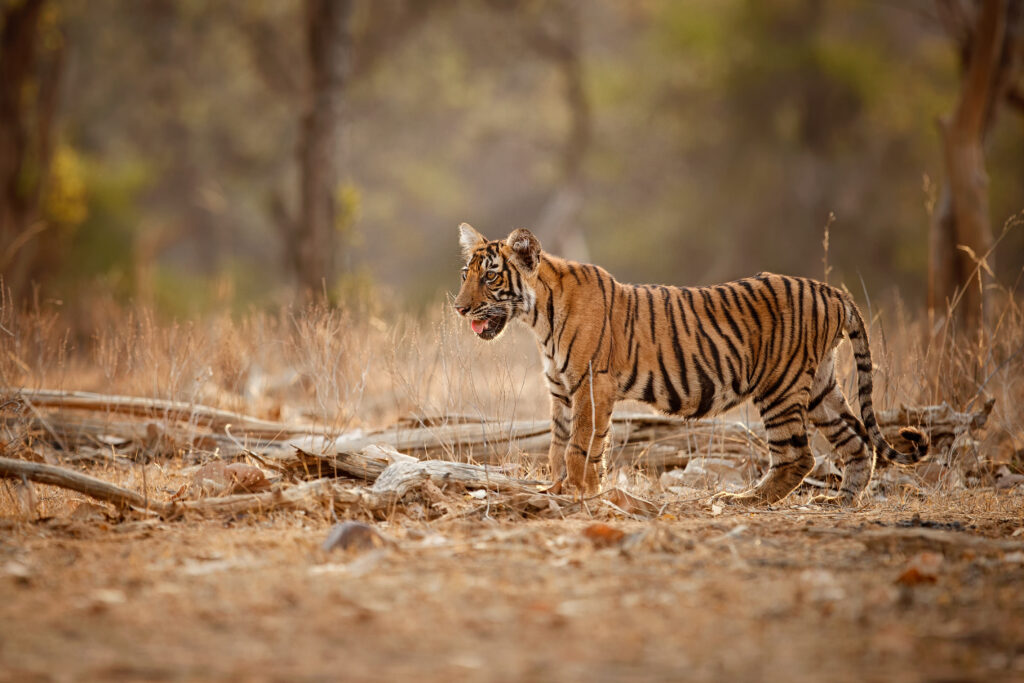
- May 24, 2024
- JnglSfri
- 0
Tigers, frequently called the “king of the jungle,” have held a enormous region in Indian tradition for hundreds of years. These majestic creatures aren’t simplest symbols of strength and power but also embody deep spiritual and cultural meanings. Exploring the records and mythology of tigers in India affords a captivating glimpse into how those animals have inspired and been respected by means of Indian society.

Let’s have a look at the history and mythology of tigers in Indian culture.
Tigers in Indian Mythology
Tigers seem prominently in Indian mythology and folklore, often depicted as effective and respected beings. One of the most well-known mythological tigers is the mount of the Hindu goddess Durga. In many depictions, Durga is proven driving a fierce tiger, symbolizing her colossal power and her ability to shield in opposition to evil forces. The tiger, on this context, represents strength, braveness, and fearlessness.
In addition to Durga, different deities and mythological figures are related to tigers. For instance, the tiger is considered the vahana (vehicle) of Ayyappan, a Hindu deity worshipped broadly speaking in South India. This connection further reinforces the tiger’s reputation as a sacred and respected creature.
Historical Significance of Tigers
Historically, tigers were a part of India’s royal historical past. During the times of the Maharajas, tiger hunting, known as shikar, turned into a royal game. While this practice is now rightfully condemned due to its impact on tiger populations, it underscores the tiger’s position as a symbol of nobility and bravery. The image of a Maharaja on a tiger hunt, often depicted in paintings and pics from the colonial generation, highlights the animal’s association with royalty and status.
Moreover, tigers have been part of Indian artwork and literature for centuries. They are regularly portrayed in traditional Indian art work, sculptures, and even ancient cash. The regal bearing of the tiger made it a favorite difficulty for artists who sought to seize its grace and energy.
Tigers in Modern Indian Culture
In present day India, the tiger remains a amazing cultural symbol. It is the countrywide animal of India, embodying the united states’s natural world history and herbal splendor. The tiger’s photo is used in numerous contexts, from conservation campaigns to company trademarks, reflecting its enduring importance.
The position of the tiger in Indian lifestyle has additionally taken on a critical conservation measurement. The alarming decline in tiger populations because of poaching and habitat loss has sparked widespread conservation efforts. Campaigns like “Save the Tiger” aim to guard this awesome animal, emphasizing its significance now not handiest to the surroundings but also to India’s cultural and herbal background.
Conservation and Cultural Responsibility
The reverence for tigers in Indian mythology and history locations a cultural obligation on the existing generation to guard and hold those remarkable creatures. The cultural and religious connections to tigers underscore the want for robust conservation efforts. By safeguarding tigers, India now not handiest preserves a important a part of its natural heritage however additionally honors the deep cultural and mythological significance these animals keep.
The tiger’s location in Indian lifestyle is a testimony to its majesty and energy. From historic mythology to trendy conservation efforts, tigers preserve to encourage and command appreciate. Understanding the ancient and cultural importance of tigers can foster a deeper appreciation and dedication to their protection. As custodians of this first rate legacy, it’s miles our obligation to make certain that tigers maintain to roam the jungles of India, embodying the strength and spirit of the country for generations to return.
